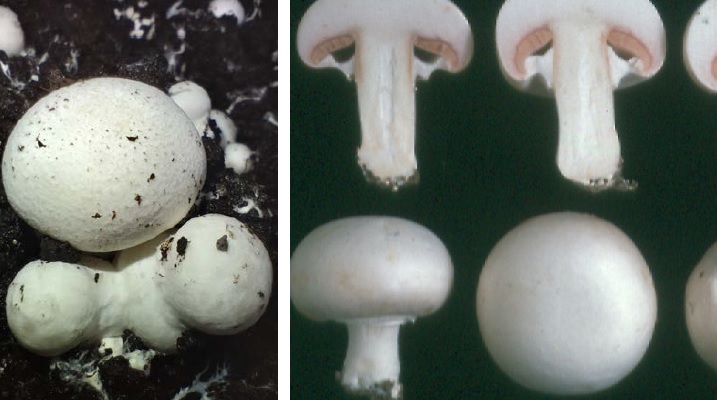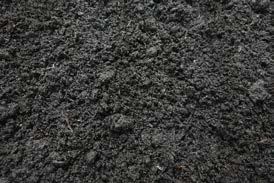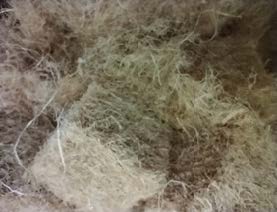Alternative casings and a sustainable mushroom industry
Mushrooms are a low-impact food. As vertical farms, their land footprint is small, and energy and water inputs into mushroom crops are much lower than comparable foods. Consequently, mushrooms have an excellent CO2eq rating. This ‘green’ image, coupled with great taste and an ever-growing list of health benefits, weaves a sweet narrative of mushrooms as a sustainable food source for a growing world population.
There is just one little snag:
Casing, or more specifically, peat casing.
Peat extraction, its history, ecology, the debate around sustainability, and its application in the horticultural industry could fill pages. What is relevant is that the UK, Ireland and Germany, major peat suppliers, are considering phasing out peat extraction. And although there is currently sufficient supply of peat for the horticultural industry, sustainable alternatives are needed to future proof the mushroom industry.
As a country without peat extraction, Australian growers have relied on expensive imports from Europe. Development of an alternative casing from local materials would potentially save cost, avoid shipping delays, and enhance the sustainability of the mushroom industry.
Presentations at the AMGA conference from Folkert Moll (Kekkilä BVB) and Dr Ralph Noble (Microbiotech Ltd) showcased the latest developments in Europe, where much of his research is occurring.
Key sustainability trends impacting the industry
The mushroom industry is not immune to global events, whether they be social, economic, or environmental. Wholesalers and retailers are acutely aware of the impact of sustainability on brand values and scrutinise supply chains accordingly.
Provenance claims, whether a diamond, a bottle of wine, or a mushroom, no longer start and end with location; the full supply chain is part of the story, including any raw materials, used in production.
 So where do you start? Folkert Moll, the sustainability manager at Kekkilä BVB, brought all this it into clear context for the mushroom industry. To navigate a path to sustainable casing, his company is looking to the UN Sustainable Development Goals1 as a guide. Six key development goals impact the mushroom industry particularly, namely urbanisation, climate destabilisation, ecosystem decline, food crisis, inequality, and resource scarcity.
So where do you start? Folkert Moll, the sustainability manager at Kekkilä BVB, brought all this it into clear context for the mushroom industry. To navigate a path to sustainable casing, his company is looking to the UN Sustainable Development Goals1 as a guide. Six key development goals impact the mushroom industry particularly, namely urbanisation, climate destabilisation, ecosystem decline, food crisis, inequality, and resource scarcity.
Resource scarcity is the immediate focus, including:
- Availability of local and circular raw materials
- Competition with other substrates and industries
- Quality of available raw materials and processing needs
- Upscaling from research to commercial application
So, what makes a good casing material?
The holy grail of an alternative casing, simply put, is a material that is as good as peat but with a lower environmental footprint. Each raw material has pros and cons, and chemical, physical, and biological properties need to be well understood. Further, these properties can change when materials are mixed.
Specific characteristics include:
- high-water holding capacity
- low salt content
- hostile to moulds
- low cost
- readily and reliably available locally
- does not stick to mushrooms
- no pathogens or contaminants
- does not attract flies
New solutions
According to Wageningen University in the Netherlands, the volume of growing media will need to increase by 332% over the next 30 years to meet the food demands of a growing world population.
By 2050 the amount of new raw materials (not yet commercially in use) has to equal the total amount of raw materials currently used for growing media. This already huge challenge is compounded by the competition for resources from other industries.
Demand for peat will likely double, although this largely depends on the political trade-off between the role of peat in enabling food safety and security, and the environmental impact of extraction. It is important to note that as horticultural peat extraction accounts for only 0.05% of global peatland use, and restoration efforts often add value to otherwise degraded peat ecosystems, the environmental impact is small.
Nevertheless, to ensure a sustainable and prosperous mushroom industry, the development of alternative casings is an industry priority.
One such group that has taken on this challenge is the European consortium BIOSCHAMP, a collaboration of six countries to research, mix and test new circular raw materials and biostimulants that can improve sustainability, while ensuring the safety and effectiveness of mushroom growing.
The consortium aims to create novel casing soils using new materials with key qualities that include appropriate gas exchange, mycelium protection, excellent water holding capacity, nutrient holding capacity and are free from pests and pathogens. It also needs have suitable physical properties, including a structure that supports and protects the expanding mycelia without being a barrier to growth.
“We (Kekkilä-BVB) joined as a project partner two years ago with a goal to create a more sustainable casing soil, reducing the sector’s dependency on peat,” Folkert said. While the research is still at the trial stage, preliminary results are promising. In Figure 1 materials are not identified, but those marked with ‘✓’ provided results statistically similar to the reference peat.

Figure 1. Yields obtained using alternative casing materials (kg/m2), X denotes materials where yield was reduced; most materials tested were not statistically significantly different to peat, marked with a ✓.
“By 2024 we will be able to discuss the alternatives in more detail, but in the meantime, I feel very optimistic that a solution is not far away,” Folkert said.
The materials were also assessed for their effects on disease, specifically number of mushrooms with bacterial blotch and occurrence of visible Trichoderma. Several materials performed as well as peat on both counts (Figures 2 and 3). Combining these results with yield data reveals several materials worth taking to the next stage of testing.

Figure 2. Bacterial blotch measured in average number of blotched mushrooms/box. Materials marked with ‘a’ are not significantly different to peat.

Figure 3. Green mould measured in average spots/m2. Materials marked with ‘a’ are promising.
What’s happening in the meantime?
While researchers toil away finding a fit for purpose peat replacement, peat will continue to be the major constituent of mushroom casing. Kekkilä-BVB are committed to the best possible practice (following Responsible Peat Production guidelines) in the sourcing, extracting, and rehabilitation of peat landscapes. which are extremely high in Sweden and Finland, where most of the peat is sourced.
Understanding Microenvironments to choose the right alternative casings
Is blending peat with something else the answer? Probably not, says Dr Ralph Noble, who has been researching the microbiology of mushroom cultivation for over 40 years. Dr Noble has turned his attention to how understanding the microenvironment of casing can help us achieve net-zero, peat-free mushroom farming. Dr Noble’s presentation focused on the properties of casing and factors that impact yield, quality, and disease.
Some background
Researchers have been searching for alternatives to peat for many years.
Dried milled peat was used in Australia up until the early 1990s, when wet dug peat became more readily available. Although the wet dug peat is bulkier and heavier, its superior water holding capacity meant it quickly became the preferred material. This is because it retains the porous structure of the Sphagnum moss from which it was formed.
Other countries are already trying to reduce use of peat, either due to cost or from necessity. For example, France and Spain commonly mix clay from local soils with peat, while China still uses milled peat, sometimes combined with rice husks and river mud.
However, it is hard to beat peat. South Africa has minimal sources of peat locally, and those it does have are protected from extraction. During the
years of apartheid, sanctions made it impossible to purchase peat externally. Local research developed and commercialised a product based on sugar cane bagasse. While this was widely used, the end of restrictions has seen farms return to the best possible casing material –wet dug moss peat.
Many options have been investigated, each with their own pros and cons, as illustrated in the table below this article (Figure 4.)
What has the science said?
If science is the process of asking nature a question, then data is her answer
Luckily for the mushroom industry, Dr Noble has been asking the right questions and has collated some useful data to answer the original question: What works and why.
When considering yield alone, peat mixed with up to 25% other materials often looks promising. Unfortunately, yield often declines as the non-peat portion increases past this level.
Some of Dr Noble’s data is shown in Figure 5. In these trials, only recycled rockwool and bark plus green waste compost could be added to peat as 25% of the total volume without negatively affecting yield.
“I don’t think the answer is in blending peat with other materials,” commented Dr Noble. “A full replacement for peat is a better option than simply trying to reduce it as a component of the mix.”
When examining potentially useful materials, it is important to consider not just water holding capacity (WHC) when saturated (e.g. after heavy watering), but also how the materials hold on to this water to slow down losses caused by evaporation and drainage.
Wet dug peat is an ideal casing because it has a high water holding capacity when saturated, and holds on to this water so that little drains out. This leaves a good supply of water for mushroom mycelium between waterings. Although wood fibre holds about 80% water when saturated, most of this is released when only a small suction is applied. On a mushroom bed, the water in wood fibre readily evaporates and drains out, leaving less for the mycelium to extract.
Conversely, green waste compost holds only 60-70% water when saturated meaning that it has to be watered frequently with smaller quantities. However, it holds on to this water better than wood fibre does when a suction is applied. The material dries out more slowly on a mushroom bed leaving a supply for the mushroom mycelium to extract.
The capacity of materials to hold water is mostly influenced by pore size, and the ability to hold water at different suctions by having a range of different pore sizes within the material or blend of materials.
Sphagnum moss, preserved as wet dug peat, has an ideal natural range in pore sizes. Avoiding excess mechanical agitation preserves this structure. However, other materials may actually benefit from mechanical intervention to improve blending of materials with large and small pore sizes (e.g. bark and clay).
Other issues to consider
Mushroom cultivation is not just a matter of producing high yields, other cropping factors must also be considered:

Material stuck to mushrooms (left), leggy mushrooms (right)
- Some materials are sticky and will cling to the mushrooms
- Some casings produce leggy mushrooms
- Over pinning can be a problem – high yield but small mushrooms
- Case run can be slower with alternative casings, increasing the time taken to grow a crop
- Irrigation practices are likely to need to change

Overpinning (left), slow case run (right)
- Risk from Trichoderma (green mould) is increased when peat is blended with other materials.

Green mould (Trichoderma harzianum) on 25% bark casing
- Some organic alternatives can also increase the risks from sciarid flies
- Conversely, bacterial blotch is reduced in some peat-based blends
Dr Noble is optimistic. Despite a few challenges, we are not too far off a peat-free future, and he wagers that by 2030 Australia will be producing high yields of quality mushrooms without peat casing.
We look forward to following the results of his work as it becomes clearer what those alternative casings might look like.
| Material | Advantages | Disadvantages |
|---|---|---|
Wet dug peat |
Free of pests and diseases Low pH and nutrient content Excellent water holding capacity Appropriate pore size, allowing air to reach mycelia Low bulk density Structurally stable and supportive |
Not sustainable due to slow regrowth of peatland (<1mm/year) Long travel distances = high freight costs Biosecurity restrictions lead to import delays Hard to re-wet if it dries out |
Coir |
Renewable and readily sourced within the region Good structure and stability Good water holding capacity Appropriate pore size Easy to re-wet after drying Low bulk density |
Must be leached to reduce salt content, requiring large volumes of water Risk of contamination (pests, diseases and chemicals) Imported, increasing freight costs Competition from other users affects price and availability |
Spent mushroom compost |
Available on farm; solves disposal problem so cost-positive Good water holding capacity Appropriate pore size Good structure and stability |
High salt content – must be leached before use, requiring large volumes of water Must be heat treated to eliminate pests and diseases |
Recycled casing |
Available on farm; solves disposal problem, cost-positive! Reduces issues with salt content in spent mushroom compost Can be added up to 1/3 without affecting yield |
Equipment needed to remove casing from spent compost Must be heat treated to eliminate pests and diseases Does not eliminate peat from growing system |
Composted wood fibre |
Renewable and locally sourced High porosity Water taken up but easily lost through evaporation and drainage Low bulk density Structurally stable |
May increase requirement for added nutrients Can become compressed Likely to require leaching or steam treatment before use Susceptible to green mould |
Green waste compost |
Readily locally available Inexpensive Moderate water holding capacity and retention Appropriate pore size May suppress some pathogens |
Variable characteristics, depending on substrates used and composting process High nutrient content (K and P) Potential for high salt content Risk of contaminants (pesticides, microbes and physical) Must be blended with other materials Relatively high bulk density |
Composted bark chips |
Readily locally available Inexpensive Large pore size |
Low water holding capacity May require leaching before use Risk of contaminants, especially if not composted correctly May contain organic compounds that inhibit growth |
Rockwool |
Pest and disease free Inert and structurally stable Free of nutrients Good water holding capacity Appropriate pore size and range Low bulk density |
Expensive – energy intensive production process plus high freight costs Low buffering capacity Can be hard to re-wet |
Used rockwool |
Readily locally available Potentially inexpensive Neutral pH and low in nutrients |
Requires processing and granulation before use Limited availability |
Vermiculite |
Pest and disease free Inert and structurally stable Free of nutrients Large pore size Extremely low bulk density |
Expensive – energy intensive production process plus high freight costs Relatively low water holding capacity |
Paper and cardboard waste |
Readily locally available Inexpensive High water holding capacity |
High bulk density Source of contaminants Can encourage mould growth |
Clays and other by-products from mining |
Materials may be readily available (some areas) Potentially inexpensive Potential yield improvement (coal tailings) Moderate water holding capacity Generally inert with stable structure Low risk of pests and disease Positive trial data exists |
High bulk density May dirty mushrooms Can adversely affect casing conductivity |
Original article by Dr Jenny Ekman and Paulette Baumgartl, published by MushroomLink (Australia) in their magazine January 2023.